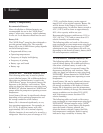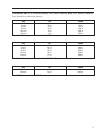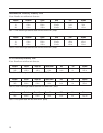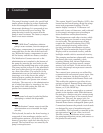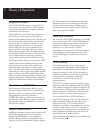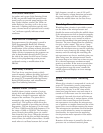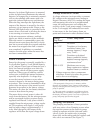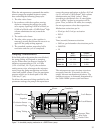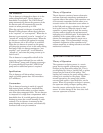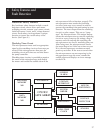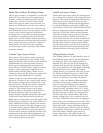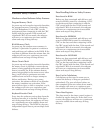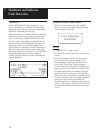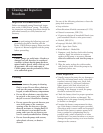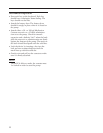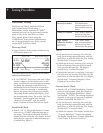
16
Air Detector
The air detector is designed to detect air in the
outlet tubing fluid path. The air detector is
detachable if not needed. The CADD-Prizm
®
pump automatically detects the presence of the
air detector and will automatically turn the
sensor on when powered up in LL0.
When the optional air detector is installed, the
Biomed Toolbox feature allows the air detector
to be “required” or “not required.” When the air
detector is not required, it can be “turned on” or
“turned off” using the Options menu. When the
air detector is required, the option for turning
the air detector on or off will not be available.
When the air detector is turned on, the pump
will detect the presence of air in the outlet tubing
fluid path. If the air detector settings are “not
required” and “turned off,” it will default to
“turned on” each time the pump powers up in
Lock Level 0.
The air detector is compatible with all of the
reservoirs and sets indicated for use with the
CADD-Prizm
®
pump, and all pump accessories.
It is powered directly from the CADD-Prizm
®
pump and no additional power is required.
Specifications
The air detector will alarm when it senses a
single air bubble greater than 100 microliters
(0.1 milliliters.)
Construction
The air detector housing is made of a special
high impact plastic and has a metalized film
coating on the inside surface to reduce interfer-
ence from electromagnetic fields. The air detector
is composed of a single base compartment with a
detachable door. It is sealed against the pump
housing to ensure the overall assembly is water
resistant. The air detector is mounted to the
pump housing with two screws, and electrically
connected with a ten pin connector.
Theory of Operation
The air detector consists of sensor electronics
and two ultrasonic transducers positioned on
opposite sides of the tubing. One transducer acts
as an acoustic transmitter and the other as an
acoustic receiver. Air detection occurs when air
in the fluid path causes a reduction in the signal
level to the receiver. When the signal is inter-
rupted for a preset length of time, the sensing
circuitry sends a signal to the microprocessor
indicating air in the fluid path. To maximize the
reliability of the system and to reduce false
alarms, the transmitted signal is swept over a
frequency range. This accommodates varying
resonance frequencies of the transducer and
reduces sensitivity to tubing tolerances and other
mechanical variations.
Upstream Occlusion Sensor
Theory of Operation
The upstream occlusion sensor is a strain
gauge device capable of detecting pressure
changes in the disposable tubing set. This is
accomplished by using a loading ball or sphere
located on the bottom of the pump. This
loading ball contacts the pump tubing when a
tubing set is attached to the pump. Under
normal operation, the pump tube pushes
outward and applies a specified force on the
sensor. When an upstream occlusion is present,
the upstream tubing collapses pulling away
from the sensor reducing the force on the
sensor. It is this change of the force that indi-
cates an upstream occlusion.



